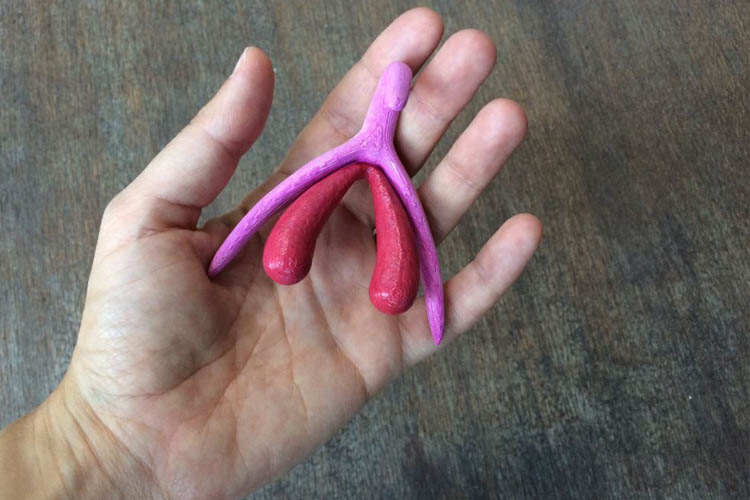3D clitoris: the researcher Odile Fillod reviews the summer buzz

It all started at the end of July with a Makery article (in French) on the first life-size printed 3D clitoris made by Odile Fillod, science sociologist, and Melissa Richard from the fablab Carrefour numérique in Paris. The announcement created a buzz this summer starting from a publication of an article by the British daily newspaper The Guardian titled “How a 3D clitoris will help teach French schoolchildren about sex” And it also attracted a large dose of hoax. Review of the media hype with the researcher, interviewed on the phone.
How was your life-size 3D model of the clitoris received?
At the beginning, the project drew the attention of anti-sexist networks (a specialized media, blogs, the SVT égalité website, then a magazine popularizing science). Following the Makery article, the project created a little buzz, especially on specialized 3D printing websites. When Stephanie Theobald from The Guardian contacted me and interviewed me in French, I was a little worried about the translation, and I asked for a proof reading without success. Her article was published on August 15. It contains two big mistakes: the idea, that was taken up everywhere, that the 3D clitoris model will be used as soon as this year in every French school starting in primary school. And that the average clitoris is 20 cm long, that it is longer than a penis.
What happened next?
I attempted to have these mistakes put right but nothing happened. The media relied on the reputation of The Guardian. The information became viral. More than one hundred articles in foreign media were about the 3D clitoris: in Sweden, in Spain, in the United-States, in Brazil, in Korea, in China… But also videos such as the MicMedia video (330 000 views) and Vocativ. Nearly 100% of the articles relayed the false information, suggesting that France is well advanced with regards to sexual education. It was dreadful to notice that very few media question the information, even though in France, these two mistakes will not be distributed (on August 22, Buzzfeed refuted them).
What is your feeling regarding this media hullabaloo?
I have mixed feelings. On the one hand there is a very positive aspect: the 3D clitoris had an unhoped for visibility in France and abroad, and apart from an obscure extreme right-wing website, it was received with a lot of enthusiasm. This shows there is a strong demand for information and educational tools on this subject. I hope it will encourage the Ministry of Education to get hold of it, be it just to put the resource online on its platforms Eduscol and Canopé. On the other hand, I am very upset that with the buzz, false information has circulated, especially on the anatomy of the clitoris, moreover associated with my name.
Find out more by reading the Facebook feed of the researcher and her blog
